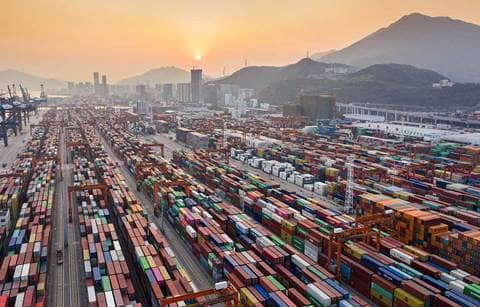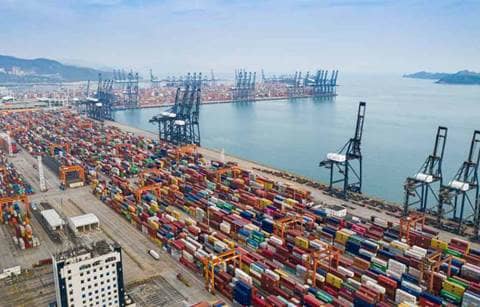U.S. trade policy has entered a period of rapid change, driven by legal challenges to existing tariffs and a push toward new enforcement tools and international agreements. This overview outlines recent trade developments and their impact on planning, competitiveness, and risk management for global businesses.
Supreme Court hearing on IEEPA tariffs
On Nov. 5, 2025, the Supreme Court heard arguments in the ongoing case challenging the president’s “fentanyl” and “reciprocal” tariffs under the International Emergency Economic Powers Act (IEEPA). The court heard the case on an expedited basis following lower court rulings that found the tariffs to be unconstitutional. A decision by the court is anticipated by the end of 2025 or early 2026.
If the Supreme Court rules against the administration and orders refunds of previously paid IEEPA tariffs, importers will likely need to file claims through a process that has yet to be established. To be prepared, maintain complete and up-to-date documentation, and consult with your legal counsel to understand potential steps if refunds are ordered. Acting early is critical — government agencies will face heavy demand, and those with accurate paperwork may receive refunds sooner.
If the Supreme Court rules the IEEPA tariffs are unconstitutional, it’s unlikely that tariffs will go away entirely. Indications are that the administration will pivot to other trade-related statutes to maintain tariff pressure. Actions could include expanding national security tariffs under Section 232 of the Trade Expansion Act of 1962 (Section 232); launching additional investigations under Section 301 of the Trade Act of 1974 (Section 301) to counter discriminatory trade practices; invoking Section 122 of the Trade Act to impose short-term tariffs to address balance of payments issues; and using Section 338 of the Tariff Act of 1930 to apply retaliatory tariffs of up to 50% on any country engaged in “unreasonable” or “discriminatory” practices against the United States.
U.S./China trade agreement
The United States and China are taking steps to implement a trade agreement formalized by President Trump and Chinese President Xi Jinping at a recent summit in South Korea. Key items included:
- A tariff truce. The United States extended its pause on higher reciprocal tariffs to Nov. 10, 2026, keeping in effect a rate of 10%. The United States also lowered the “fentanyl” tariff to 10%. These combined actions, effective Nov. 10, 2025, bring the total IEEPA tariffs on China to 20%. As part of the deal, the United States also extended 178 product-specific Section 301 tariff exclusions (that were due to expire on Nov. 29, 2025) to Nov. 10, 2026. In return, China issued an order suspending until Nov. 10, 2026, its higher tariff threatened on the United States, maintaining the current baseline 10% tariff on U.S. imports. China also issued an order ending the higher tariffs it had imposed a certain agricultural and other goods.
- Export controls on rare earths. China announced it will suspend the global implementation of its October 9 export controls on rare earths, gallium, germanium, antimony, and graphite.
- Semiconductor exports. The United States loosened its restrictions on exports of advanced semiconductors and chip-making equipment, and China will allow the resumption of exports from Nexperia legacy chip facilities in China, relieving issues on automotive supply chains.
We note that China continues to be subject to other duties under Section 301, Section 232, and antidumping provisions, resulting in a total estimated average rate of around 47%. And more Section 301 actions could be on the way. The U.S. Trade Representative (USTR) recently published a Federal Register notice seeking comments related to China’s compliance with the Jan. 15, 2020, Economic and Trade Agreement between the United States and China and potential actions to address any U.S. denial of rights and benefits under the agreement. This action relates to the 2018 Section 301 investigation into China’s practices related to technology transfer and intellectual property. Comments are due December 1, and the USTR will hold a public hearing on December 15.
Section 232 tariffs targeting imported trucks, parts, and buses
Following a investigation by the USTR, Trump signed Proclamation 10984 on Oct. 17, 2025, invoking a Section 232 tariff of 25% on imports of medium- and heavy-duty vehicles and their parts, and a 10% tariff on buses. Vehicles and parts that qualify under the United States Mexico-Canada Agreement (USMCA) are partially exempt with tariffs applying only to the non-U.S. content of qualifying imports. These tariffs don’t appear to include a reduced rate for the United Kingdom, Japan, and European Union trade deals. This question is still under review.
The proclamation also revises how multiple tariffs will apply to imported trucks, parts, and buses. USMCA-qualifying goods are now considered subject to Section 232, even if no duty is owed, thus protecting importers from cascading tariff liabilities and ensuring consistent treatment across trade regimes. The proclamation also expands the list of parts subject to automobile duties, creating opportunities for importers to bring parts into the United States at the 25% auto duty rate — in some cases, a lower percentage than having the reciprocal tariff apply or Section 232 tariffs on steel value. Additionally, companies can now self-certify that imported components are subject to the parts tariff, even if they’re not on the list, as long as they attest that the part is used in auto production or for repairs. The auto tariff rate doesn’t stack on top of other duties. The administration has signaled it will further expand the parts tariffs list in the future.
U.S. manufacturers assembling trucks or engines domestically can offset up to 3.75% of the aggregate value of vehicles built in the United States (2025–2030). This offset is designed to reduce the net tariff burden and encourage domestic production while harmonizing the auto and truck tariff programs.
The immediate impact of these updates will be felt by importers of trucks and parts from outside North America as they face higher landed costs. Components sourced from Europe, Brazil, India, and Asia are expected to be the most heavily impacted. Conversely, this action provides domestic and USMCA-based manufacturers with a clear cost edge over foreign competitors, incentivizing OEMs and suppliers to increase U.S. content to avoid tariffs. Tier-2 and -3 suppliers in North America stand to benefit from new sourcing contracts, and reshoring and joint ventures may be leveraged to take advantage of tariff offsets. The shifting landscape could also increase demand for U.S.-based remanufacturers of engines, transmissions, and axles, as cost-effective alternatives to new imports.
Supply chain managers and customs brokers should prepare for increased administrative workload and have contingency plans ready for short-term parts shortages and inventory realignments. Likewise, fleet operators should prepare for longer lead times and higher maintenance costs as the tariffs work through the supply chain.
Malaysia, Thailand, Vietnam, and Cambodia trade agreements
During Trump’s Asia tour in October 2025, the United States announced a series of trade arrangements with Malaysia, Thailand, Vietnam, and Cambodia. They share a common framework focused on reciprocal tariff reductions, preferential market access, and cooperation on critical sectors such as digital trade, intellectual property, labor standards, and critical minerals.
USMCA review on the horizon
The USMCA will soon be back in the news as the parties prepare for the formal review in 2026. Businesses with significant cross-border activities in North America should be prepared for confusion and uncertainty during this period. The U.S. commenting process is underway now, with initial hearings scheduled to begin Nov. 17, 2025. The formal review process between the parties is scheduled to start July 1, 2026.
A clearer outlook is forming for U.S.-based businesses
What do these tariff and trade shifts mean for businesses? The evolving U.S. trade strategy underscores a period of heightened complexity and opportunity. The current trajectory of trade and tariff policy reveals a calculated approach by the U.S. administration to gain favorable trade terms and increased export opportunities for U.S. manufacturers. Businesses should prepare for a multilayered tariff environment as the administration signals readiness to pivot from IEEPA to other statutory tools such as Sections 232 and 301. This shift will increase compliance demands, requiring meticulous documentation and proactive customs planning. Trade talks with key international trading partners are progressing, and the USMCA renegotiation is on the horizon. For businesses with cross-border operations or global supply chains, understanding these developments is essential to staying competitive in a rapidly evolving market. Finally, the pending Supreme Court decision on IEEPA tariffs introduces uncertainty around refunds and potential litigation. Companies that prepare now by maintaining robust documentation and monitoring regulatory developments will be best positioned to navigate refund processes and avoid costly disputes.





